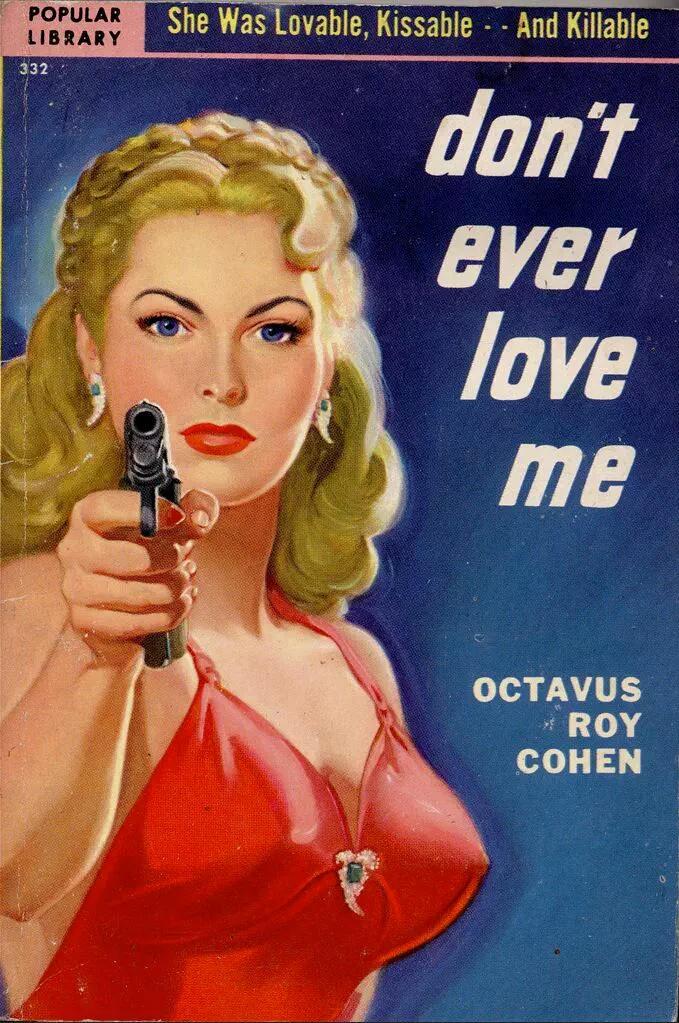For the latest entry in this blog series I decided to again discuss the prolific author Octavus Roy Cohen [1891-1959]. I've done a previous post of this type on him, but I wanted to expand that one to include more covers and more about his life and work.
Cohen had a long writing career that stretched from newspaper work in Birmingham and other cities, 1910-1912 until the last of his many novels appeared in 1956. He also published numerous short stories in such magazines as the Saturday Evening Post, Collier's, Redbook, Liberty, Ellery Queen's Mystery Magazine and many others. Between 1915 and 1960 many of his novels and stories were adapted for films.
Cohen's writing career was not only long but much of it controversial now and in his own time. The middle third was dominated by numerous stories about Florian Slappy, a black man featured in Cohen's "Negro tales", many set in Birmingham, and full of condescending dialect and "humor." These stories, published between 1919 and 1950, often appeared in major magazines of the day, and the NAACP complained about them at the time. After World War II such humor disappeared from the "slick" magazines, and Cohen returned to the detective and mystery thrillers he had written earlier.
Cohen lived in Alabama briefly before World War I when he worked for the Birmingham Ledger around 1911. By 1914 he was back; he married Inez Lopez in Bessemer in October of that year. He had also begun to write fiction including some of the more than 250 short stories he produced and his first novel The Other Woman published in 1917 and written with John Ulrich Giesy, a physician and author.
The Cohens and their only child remained in Birmingham until 1935, when they moved to New York and finally Los Angeles. While living in the city, Cohen was a member of The Loafers, a group of journalists and authors whose other participants included local novelists Jack Bethea and James Saxon Childers. For at least some of the time the group met at the Cohens' residence in the Diane Apartments on 21st Street South. Travis Bryant has written a useful blog post on the Loafers largely based on John W. Bloomers' article in the April 1977 issue of the Alabama Review.
An author who often writes about mysteries and detective thrillers, Jon Breen, has explored the work of Cohen that features his three detective characters. Florian Slappy was a detective on occasion, but as mentioned his numerous stories are too offensive for modern tastes. That's too bad, since many are set in Birmingham--others in Harlem. He's considered an early black detective in fiction.
Another of Cohen's detectives was David Carroll, who appeared in four cases. The second was The Crimson Alibi [1919, cover below] and the last was Midnight [1922], which is online at the Internet Archive. Finally, Jim Hanvey was the private eye in various stories and two novels, The Backstage Mystery [1930, set in the theater world] and Star of Earth [1932, et in the Hollywood film world]. A collection of seven stories has been issued recently, as noted below.
Other than his publications and TV adaptations of his work, little is known about Cohen's time in New York and Los Angeles after he left Alabama. He died January 6, 1959, at the age of 67, and is buried in Forrest Lawn Memorial Cemetery in Glendale, California. Wife Inez had died on February 6, 1953, age 60, and was buried in the same cemetery.
Their only child, Octavus Roy Cohen, Jr., was born January 21, 1916, in Bessemer like his mother. He died October 14, 1974, in British Columbia, Canada, age 58. The Decatur Daily for April 18, 1944, notes he took out a marriage license for April 24 to wed Katherine Van Allen Tallman at the Church of the Convent in New York City. Cohen, Jr.'s profession was listed as writer. Details about his career and the marriage will have to wait for further research.
D. Appleton, 1927. Filmed in 1930 with Billie Dove, directed by Lloyd Bacon; a lost film
Published 2021. First published in 1923, the volume includes seven stories, all originally published in the Saturday Evening Post.


























